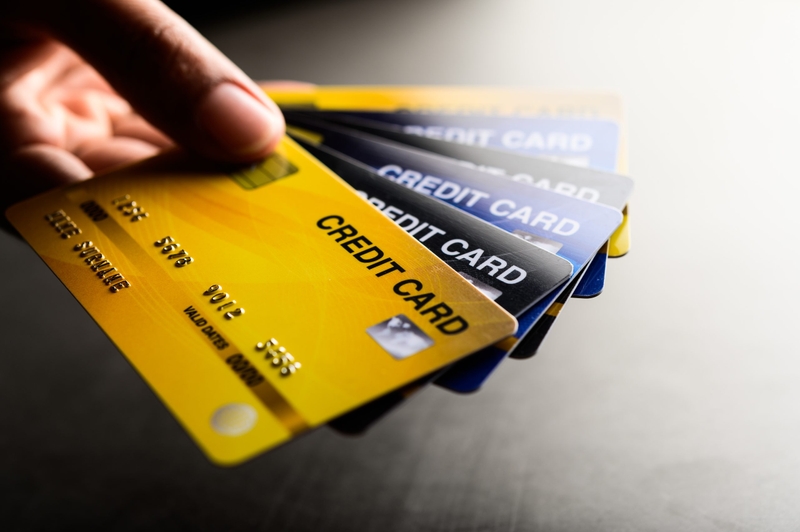

What Are Synthetic Trading Pairs?
A synthetic currency pair is created by combining two or more existing trading pairs to represent a new relationship that isn’t directly available on an exchange. Instead of relying on a pre-listed market like EUR/GBP, you could construct it using EUR/USD and GBP/USD.
VELLIS NEWS
21 Aug 2025
By Vellis Team
Vellis Team
Automate your expense tracking with our advanced tools. Categorize your expenditures
Related Articles

Vellis News
22 September 2025
Payment Processing ISO: What is an ISO & What is Their Role
Short for Independent Sales Organization, an ISO plays a vital role in the payment ecosystem. Understanding how ISOs work can help you choose the right partners, reduce risks, and keep your business running smoothly.

Vellis News
14 July 2025
Carried Interest in Private Equity: Who It Benefits and How It Works
Carried interest is a central incentive mechanism in private equity, designed to reward general partners (GPs) for delivering strong fund performance. It gives GPs the right to earn a portion of the fund’s profits, usually after surpassing a predefined performance hurdle, aligning their interests with those of the limited partners (LPs) who supply the capital.

Vellis News
31 March 2025
Understanding Pricing Models for High-Risk Payment Gateways
High-risk industries often face unique challenges in managing payments due to increased risks of fraud and chargebacks. These challenges require high risk merchant payment gateways tailored to their needs.
This allows traders to access markets that don’t exist directly, reduce costs, or take advantage of market inefficiencies.
You’ll often see synthetic pairs in forex, cryptocurrency, and even certain commodity markets where flexibility and creativity can open up new trading opportunities.
Understanding Synthetic Trading Pairs
A synthetic currency pair works differently from a traditional pair listed on an exchange. In a standard trading pair, the market directly quotes the relationship between two assets – like USD/JPY or ETH/BTC – so you can trade them in a single transaction.
With a synthetic pair, you build that relationship indirectly by combining two trades. For example, to trade EUR/GBP, you could:
- Buy EUR/USD (which gives you euros by selling dollars)
- Sell GBP/USD (which sells pounds to buy dollars)
By doing this, you’ve essentially created the same effect as trading EUR/GBP even if your broker or exchange doesn’t offer it directly.
Mathematically, the synthetic pair’s price comes from dividing or multiplying the rates of its component pairs. For example, if EUR/USD = 1.1000 and GBP/USD = 1.2500, then:
EUR/GBP = 1.1000 ÷ 1.2500 = 0.88
This process lets traders bypass market limitations and create their own trading instruments.
Why Use Synthetic Trading Pairs?
Traders use synthetic pairs for several reasons:
- Access to unavailable markets: Not every exchange lists every possible pair. By creating your own, you can trade pairs that don’t officially exist on that platform.
- Exploiting inefficiencies: If the price of a direct pair is out of sync with its synthetic equivalent, arbitrage traders can profit from the difference.
- Risk management: Synthetic pairs can be used to rebalance portfolios or hedge against unwanted exposure in other positions, similar to what is currency hedging in risk management.
Institutional traders and algorithmic trading systems especially like synthetic pairs because they open up a broader range of strategies without depending on what the exchange lists.
How to Create a Synthetic Trading Pair
Creating a synthetic pair isn’t complicated once you understand the basics:
- Identify your desired base and quote assets: For example, you want EUR/JPY.
- Find two or more available pairs that can bridge the gap (EUR/USD and USD/JPY work well).
- Calculate the cross rate: Multiply EUR/USD by USD/JPY to get EUR/JPY.
Example:
- EUR/USD = 1.1000
- USD/JPY = 145.00
- EUR/JPY = 1.1000 × 145.00 = 159.50
With that calculation, you’ve essentially built EUR/JPY synthetically.
Common Markets Where Synthetic Pairs Are Used
Synthetic pairs are often used in the following avenues:
Forex market
Forex traders often build synthetic cross-currency pairs when brokers don’t list rare combinations, like AUD/CHF or NOK/JPY.
Cryptocurrency exchanges
In crypto, synthetic pairs can be built using stablecoins, wrapped tokens, or DeFi protocols to trade assets indirectly. For example, BTC/ADA might be constructed using BTC/USDT and ADA/USDT.
Commodities and derivatives
Synthetic exposure can be created by combining positions in related futures contracts or ETFs.
Benefits of Synthetic Trading Pairs
The appeal of synthetic pairs comes from their flexibility and cost-efficiency:
- Access to more markets: You’re no longer limited by what your broker or exchange offers.
- Portfolio diversification: They allow you to broaden your exposure to different currencies or assets.
- Lower transaction costs: Sometimes, the spread on two liquid pairs is cheaper than the spread on a less liquid direct pair.
- Arbitrage opportunities: When a direct pair and its synthetic equivalent differ in price, traders can exploit the gap.
Risks and Challenges of Using Synthetic Pairs
While synthetic trading pairs can be powerful, they’re not without drawbacks:
- Complexity: More calculations and trades mean more opportunities for mistakes.
- Execution risk: Delays in executing both legs of the trade can cause slippage and reduce profitability.
- Correlation issues: If your assumptions about how the component pairs move together are wrong, you could be left with unexpected exposure.
- Capital requirements: Because you’re entering multiple trades, you might need more margin, which can tie up capital.
Tools and Platforms That Support Synthetic Trading
Many trading platforms make it easy to build synthetic pairs, either manually or through automation:
- MetaTrader (MT4/MT5) – Popular for forex traders who use Expert Advisors (EAs) to automate synthetic trading.
- DeFi tools – In decentralized finance, smart contracts and DEX aggregators can help create synthetic crypto pairs.
- Institutional FX platforms – These often have built-in synthetic pair calculators and APIs for algorithmic strategies.
If you’re serious about synthetic trading, consider using a foreign currency exchange service that offers deep liquidity and low spreads to keep costs down.
Real-World Use Cases of Synthetic Pairs
Here are some real-life applications of synthetic pairs:
- Retail forex trader: A trader wants to trade EUR/JPY but their broker doesn’t list it. They buy EUR/USD and USD/JPY to replicate it.
- Crypto trader: An exchange doesn’t list BTC/ADA, so they trade BTC/USDT and ADA/USDT to achieve the same exposure.
- Institutional hedge fund: Uses synthetic pairs to hedge against foreign exchange risk in multiple markets at once, often as part of a larger risk management and cross-hedging strategy.
Synthetic trading pairs might sound advanced, but they’re simply another way for traders to access markets, manage risk, and find opportunity. With the right tools and knowledge, synthetic pairs can open the door to new possibilities while helping you trade smarter and more efficiently.
Frequently Asked Questions (FAQs)
What is a synthetic currency pair?
A synthetic currency pair is created by combining two separate trading pairs to simulate a new one that may not exist directly on a trading platform.
Are synthetic pairs used only in forex?
No, they’re also common in crypto and commodities markets, especially where direct trading pairs are unavailable.
Is trading synthetic pairs risky?
Yes, they carry complexity, execution risk, and require precise calculation, but they can be useful when used correctly.
Can I use synthetic pairs to reduce trading fees?
Sometimes, if the spreads or commissions on the underlying pairs are lower than the direct pair equivalent.
Do trading platforms offer tools for synthetic pair creation?
Some platforms support manual creation or automation through trading scripts, especially in professional or API-integrated systems.
References
Shift Markets. (2024, October 3). What are synthetic trading pairs? A quick overview. Shift Markets. https://www.shiftmarkets.com/blog/what-are-synthetic-trading-pairs
Edge-Forex. (2025, June 7). What are synthetic currency pairs and how do they work? Edge-Forex. https://edge-forex.com/what-are-synthetic-currency-pairs-and-how-do-they-work/
NordFX. (n.d.). Synthetic currency, cryptocurrency and other pairs. NordFX. https://nordfx.com/en/useful-articles/648-synthetic_currency

Ready to transform your financial management?
Sign up with Vellis today and unlock the full potential of your finances.
Related Articles

Vellis News
8 October 2025
The Credit Card Flow: Data Journey from Swipe to Payment
Ever wondered what happens after you swipe, tap, or key in your credit card details? Behind that seemingly instant transaction lies a sophisticated digital journey involving multiple players, data exchanges, and security checks — all happening in seconds.

Vellis News
21 October 2025
What is BIN Sponsorship?
Companies today launch new card programs, payment apps, and embedded finance solutions at record speed. Ever wondered how non-banks — like fintech startups — can issue cards or process payments without being a licensed financial institution?

Vellis News
23 September 2025
Are Payment Processing Fees Tax-Deductible?
Payment processing fees can be explained plainly as charges businesses pay to banks or service providers for handling credit card and electronic transactions.
We use cookies to improve your experience and ensure our website functions properly. You can manage your preferences below. For more information, please refer to our Privacy Policy.
© 2025 Vellis Inc.Vellis Inc. is authorized as a Money Services Business by FINTRAC (Financial Transactions and Reports Analysis Centre of Canada) number M24204235. Vellis Inc. is a company registered in Canada, number 1000610768, headquartered at 30 Eglinton Avenue West, Mississauga, Ontario L5R3E7, Canada.

